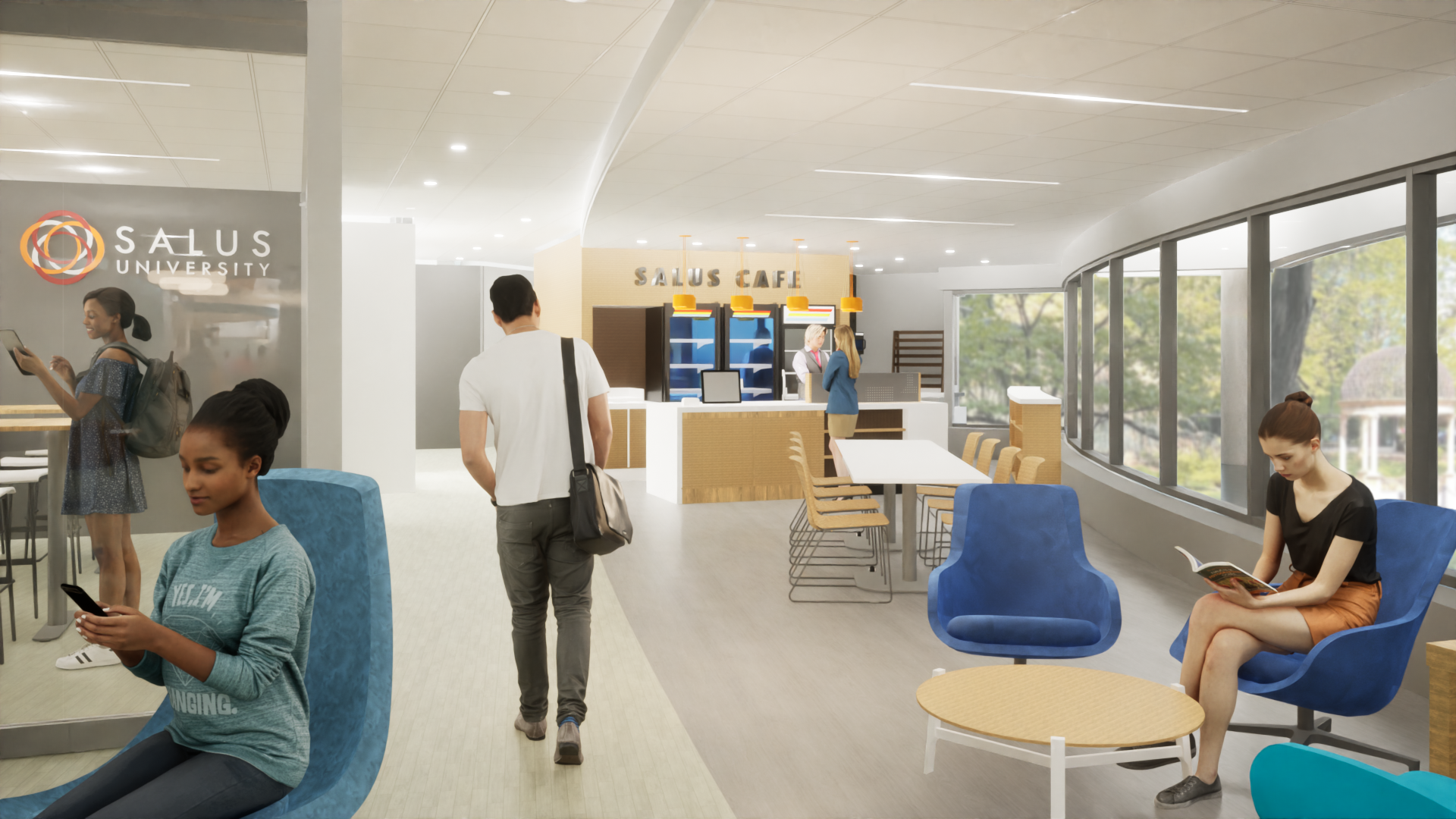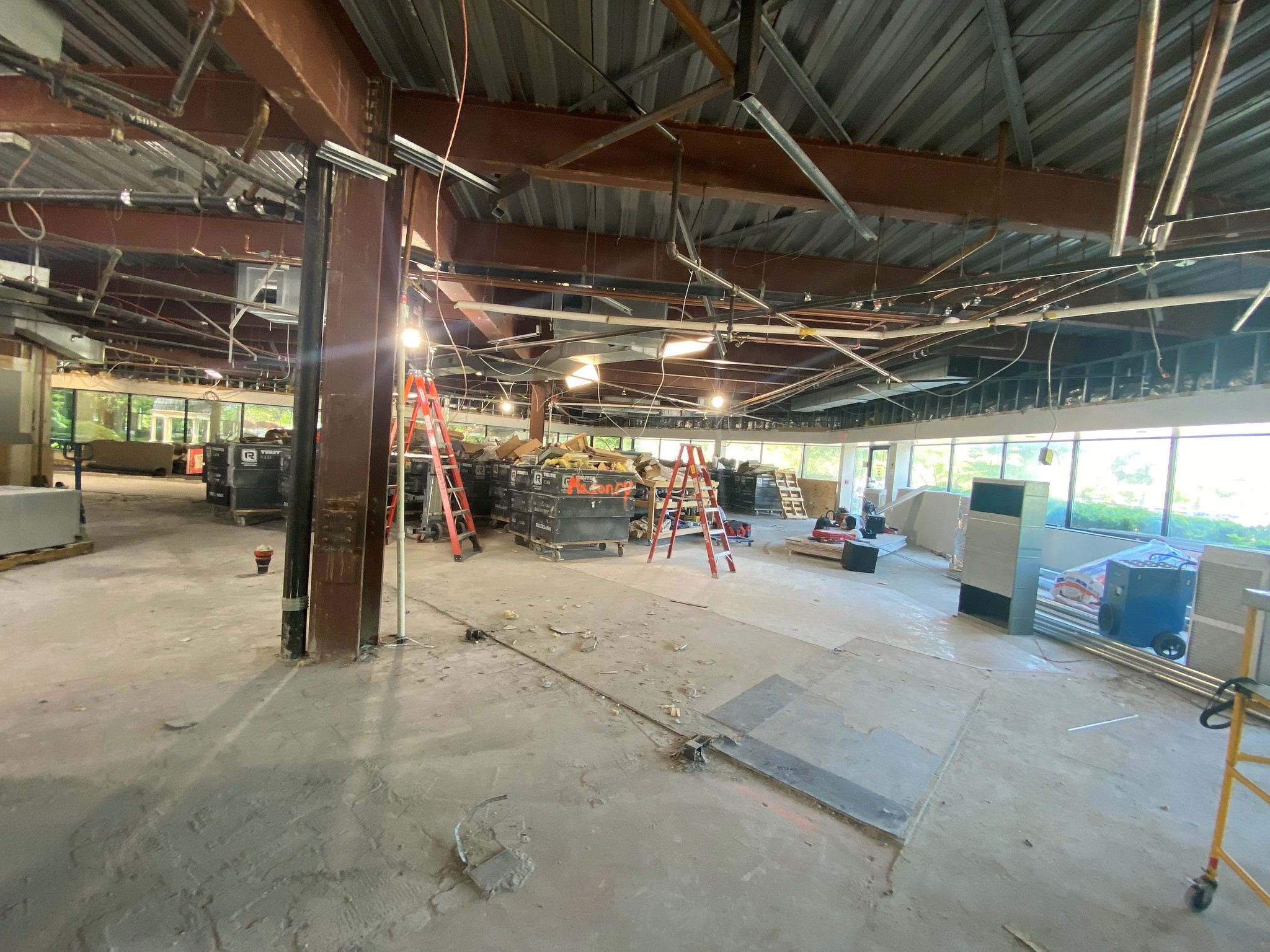Before project manager Amie Leighton, RA, LEED AP, finalized the designs of the first-floor renovation in the south building on the University’s Elkins Park, Pennsylvania, campus, she realized they needed to be welcoming and accessible for the whole Salus community.
“Since we have the Blindness and Low Vision Studies (BLVS) programs right here, we wanted to make contact and review the design to see if we were doing the right things, or what changes we could implement to make the space more inclusive for those with vision impairments,” said Leighton.
Key stakeholders were involved in the process, including students who shared how they use (and would like to use) the facilities. Among those consulted were faculty members of the Department of Blindness and Low Vision Studies to better understand how to design spaces that are facilitate orientation and mobility for individuals with visual impairments.
“So we started to really look at the transitions between spaces and to consider how texture and color change can provide cues to help those with low vision navigate more confidently,” she said.
For example, changing floor textures can provide helpful non-visual information. There will be vinyl floor tiles throughout the space leading to and including the new dining area. Using a different textured floor tile in the serving area, like ceramic, provides a cue that people are entering a different space.
The new plan has a curved section of corridor that’s going to be open to a cafe space with tables and chairs. BLVS faculty explained the benefits of delineating between sitting spaces and walking areas.
“We were doing it with the change of floor color, but we learned we could do it better by also adding a simple transition strip — a slightly raised indicator of the change in material — that will allow somebody using a mobility cane to feel that there is something happening.”
Leighton stressed that none of the accommodations will negatively impact the aesthetics of the area, and will provide subtle cues to those who are looking for them. Furniture in the renovated space was also a consideration because it can also impact the navigation of individuals who use a long cane for mobility.
"This is a significant project for the University, so it’s important to make sure the improvements take everyone’s needs into consideration,” she said.
For their part, those in the BLVS department were thrilled to be included in the discussion and planning and to contribute ideas to the project’s plans.
“It was great to see Salus' commitment to inclusivity at work, as decisions about color, contrast, location and design of the furniture were made collaboratively and with the ultimate goal of a welcoming space for all students,” said Fabiana Perla, EdD, COMS, CLVT, chair of the BLVS department.
According to Leighton, Phase 1 of the construction has commenced and is currently on schedule. Phase 2 of the project, which started at the beginning of May, includes the renovation of the dining hall space. Temporary food service has been set up at the Hafter Student Community Center while the dining hall construction is completed. Leighton anticipates that the project will be finished mid-to late August and hopes it will be ready for the start of the fall term.